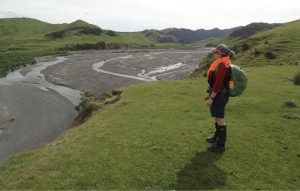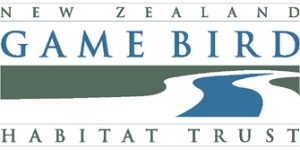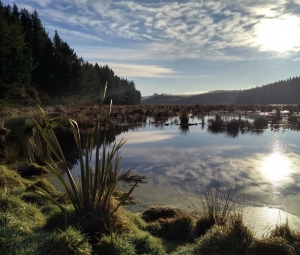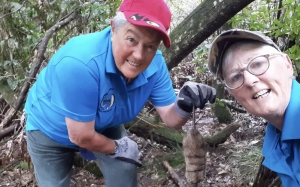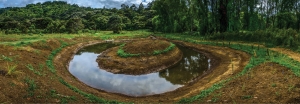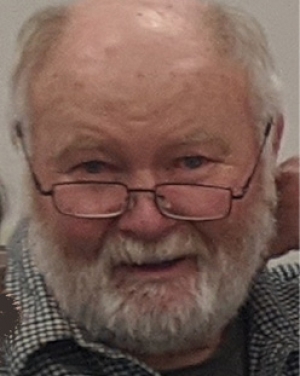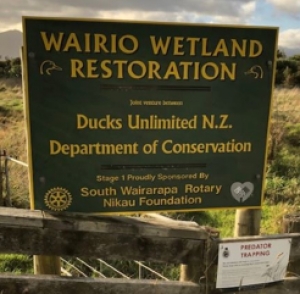Super User
BOOK REVIEW
BOOK REVIEW
The Forest for the Trees, by Wayne Bennett
I found this book easy to follow in a well laid out and simple format that seems suited for those at all levels of native restoration – with mine at the beginners' end.
Although based on a plot in the Waikato, essentially the methodology can be set for any area. Mine is a coastal site, lower-west North Island, so I have used some of the strategies in the book but adapted them to meet local conditions.
The systematic approach to establishing native plant communities is well explained. Setting a plan of attack around site assessments, the weed battle and site management will ensure that the end result will mirror that of a natural area.The photos taken by the author suit the book well, and is a valuable source of identification. The book is a must-have – from a beginner's perspective – for someone intending to embark on native restorative planting.
I note my thanks as the recipient of the book from DU's lucky draw.
Review by Ian Jensen
Restored wetlands bring diversity
DU's inaugural scholarship recipient Shannon Bentley is in the final stages of analysing data for her thesis on wetland restoration.
She says she is exploring how restoring wetlands from pasture changes plants, microbes and soil.
"Restored wetlands are home to more diverse native plant communities and soil microbial communities than pastures, preliminary results show.
"This diversity produces a wide variety of benefits for people. For example, restored wetland soils have an increased capacity to store carbon, attenuate floods, and remove excess nutrients. "However, restoration creates a wide variety of responses, with every restored wetland being different."
More to come from this space, she says.
Predator control in Aorangi Forest
An ambitious predator control programme in and around the Aorangi Forest in the southern Wairarapa is delivering some impressive results.
The Aorangi Restoration Trust is working in partnership with TBfree NZ, which has carried out three aerial applications of 1080 aimed at controlling possums and rats, covering 33,000 hectares. The first 1080 drop was in 2014, with subsequent drops in 2017 and 2020. The trust, which was established in 2011, is encircling the drop zones with predator control measures to help reduce re-infestation and the flow of predators from the forest into surrounding land, including the coastal penguin zone.
Trap lines cover more than 140 kilometres, with traps placed every 100 to 200 metres up most of the major streams in the forest.
"Much of the land is in private ownership and we are very fortunate to have the support of local landowners. They and many other volunteers, both local and regional, help check and service the traps," the trust says.
Recently, trustee Joe Hansen, with Sandra Burles and Nigel Boniface, walked the true left of the Opouawe River from the sea to the Kaiwaka bridge to mark out trap sites at an average of 150 metres between sites.
"We marked 37 trap sites on the true left and also saw four dotterels en route,"
Joe said.
As well as predator control, the trust and its partners carry out monitoring, penguin recovery and education activities.
Victoria University has been tasked with monitoring the impacts of 1080 in the Aorangi Forest and part of this work is assessing birdsong before and after the 1080 drops. Research so far has shown that 1080 has not reduced the numbers
of native birds.
It involves monitoring six sites in the Aorangi Forest Park and two in the Rimutaka Range ,which are used as reference sites. Chew cards, tracking tunnels and wax tags are used to monitor pest abundance.
Bird recorders and observations are used to monitor native birds, while pitfall traps and weta hotels are used to monitor invertebrates.
Monitoring in 2016 also found an unclassified species of forest gecko.
The main areas of research, including that carried out by summer research students are:
▪ Changes in abundance and recovery of pest species
▪ The impacts of 1080 on native bird species.
▪ Does the forest go silent after a 1080 drop?
▪ The impacts of 1080 on invertebrates, with special emphasis on weta populations.
Bob Burgess, project manager for the trust, is a retired scientist. He trained in plant ecology and recently worked at Victoria University.
He continues to work closely with the university’s scientists.
He says they are already getting some interesting results. A frequent claim of aerial 1080 opponents is that “the forest goes silent after a 1080 drop”.
“The birdsong actually got louder immediately after the first drop – across all native species,” Bob says.
That finding was from 3000 hours of acoustic recordings, made at various times of day and night, by 24 automated sound recording devices which were on location for several months before and after the 1080 drop.
Other Victoria University research projects have looked at the relationships between the forest, seed masting and the effectiveness of 1080 in reducing rat numbers. “Rat numbers went down immediately,” says Bob, “but the rats were back to pre-1080 levels within six months. Possums too recovered, but at
a much slower rate. It took about two years for possum numbers to get back to pre-1080 levels.”
The scientific research has practical implications for pest control in the park.
“Pest control needs to be responsive, triggered by the results of monitoring pest and bird numbers.
And timing of 1080 drops,” says Bob, “needs to be in early spring, so there
will be low rat levels when the birds are breeding.”
Birds will then have a rat-reduced ‘window of opportunity’ in the critical period when eggs, nestlings and incubating adults are vulnerable to predation.
Ducks Unlimited Director Jim Law is one of the trustees of the Aorangi Restoration Trust, along with Clive Paton (chair), Anne Firmin, Chris Lester, John Bissell, Mark St Clair, Tony Didsbury, and Joe Hansen.
What the Game Bird Habitat Trust does
The Game Bird Habitat Trust was established by the Wildlife Act 1953 and must comply with the Crown Entities Act 2004 as per the 4th Schedule of the Public Finance Act 1989.
There are a range of functions set out in section 44D of the Wildlife Act, but primarily it is to improve New Zealand’s game bird habitat and its secondary
function is to improve the habitat of other wildlife.
This is achieved by identifying, evaluating and funding areas of New Zealand worthy of protection, restoration, or creation of suitable habitat. The trust is also charged with recommending the production, fees and species to be depicted on the following year’s Game Bird Habitat Stamp to the Fish and Game Council.
The bulk of its funding is provided through the Game Bird Habitat Stamp programme. The Habitat Trust has charitable trust status but is yet to receive any significant donations. Additional funding via corporate partnerships is being explored.
The trust is the sole public body or charitable trust dedicated to providing
financial backing for game bird conservation in New Zealand. It has been influential in supporting many projects over the years by recognising that often all that is needed to enable a project to go ahead is a modest grant.
The trustees recognise habitat protection as one of the most significant drivers
of positive change for New Zealand’s wildlife.
Farmland ponds across New Zealand are important habitat for wildlife in
the agricultural landscape. Healthy networks of these ponds, at different stages of their lives, help wildlife species to move around farmland habitats.
As habitat fragmentation continues to increase, they are more important than ever. Without them, many species would struggle to survive.
The trust is working to increase the number of ponds on rural land by helping landowners restore existing overgrown ponds and create new ones.
The Para Wetland in Marlborough is one of the most significant projects funded by the trust and has become its “flagship” project over recent years. The trust has been able to assist the Nelson/ Marlborough Fish and Game Council develop and implement a detailed management and development plan, promote public interest and mobilise support from other funders.
Other major projects supported by the trust include the Takitakitoa Wetland and the Underwood Wetland near Dargaville. The trustees are looking
at other potential significant projects including the JK Donald Block on the north-eastern edge of Lake Wairarapa.
The trust prides itself on punching above its weight in terms of its contributions
to habitat protection over the past 25 years. Back in the early years, it was one of a small number of agencies allocating funds to landowners for habitat protection. Local regional government and other funding agencies are now allocating much larger sums. Today, the trust helps fund about 20 projects a year. These modest amounts are often enough to trigger additional investment and ensure protection goes ahead.
Applications for grants from the trust close on 30 June each year and are open to anyone with support from the landowner and a recognised habitat referee.
The trust celebrates the fact that hunting is not only part of a unique tradition that links present day New Zealanders to our ancestors and the rural community, but
is also responsible for funding habitat initiatives that might otherwise never be completed.
Without habitat, there is no wildlife. It is that simple, Andy Tannock says.

Takitakitoa impresses trustees
"The best bang for your buck" is how New Zealand Game Bird Habitat
Trust Chair Andy Tannock described Takitakitoa Wetland in Otago on September 19.
Trustees visited the wetland near the Taieri River during the annual meeting of the trust which was held in Dunedin.
It was the first meeting of the new board appointed by the Minister of Conservation in July. It consists of Andy Tannock, DU Board member Neil Candy, former DU president John Cheyne, Jan Riddell, Mark Sutton and Chantal Whitby.
The trust met to review 14 applications made to the trust for wetland projects across the country for 2020 – they subsequently approved 11 of the applications.
The award-winning Takitakitoa project has previously received funding from the trust.
Takitakitoa has been one of the largest wetland enhancement projects undertaken without extra funding help from non-Fish & Game sources. Otago Fish & Game was gifted the lower portion of the wetland in 1994, around 40 hectares, and later obtained the upper portion of the 70ha wetland, through a land swap deal.
The project was launched with a $50,000 grant from the Game Bird Habitat Trust which was largely spent on constructing a 350-metre bund so the valley floor,
which was drained in the 1960s, could be reflooded. This took about two years to complete. Otago Fish & Game Council also put funds into the project.
"It was basically taking 32 hectares of drained, failed farmland and turning it back into wetland," says Otago Fish & Game chief executive Ian Hadland. "Takitakitoa is a shining example of hunter funding being used for greater conservation benefit.
This is an ecological restoration project which has benefits for not just duck hunters, but anyone interested in enhancing or conserving natural habitat for the future."
As soon as water refilled the wetland, all sorts of wildlife turned up, species that had not been previously observed there while it was in its degraded state, he says. "There’s clearly conservation benefits there that even I didn’t expect. Some creatures turned up that I didn’t even know were in the neighbourhood … like the pied stilts. There are probably 30 to 50 that have moved in to live and raise their chicks."
Wildlife included species well outside of Fish & Game’s area of interest such as inanga (whitebait), fernbirds, grey teal and royal spoonbills.
However, Ian points out that mallard ducks and some other game birds have also colonised the area, and allowed for the wetland to be used for novice hunting in particular.
"Getting the next generation of hunters out there to appreciate wetlands and learn their value is important. Those young hunters will undoubtedly fund similar conservation efforts in the future." Takitakitoa is a project that Fish & Game can hold up as "a great example of a duck hunter-funded conservation project", he says.
For more about the wetland and how to apply for Game Bird Habitat Trust funding, go to: youtube.com/watch?v=JtpRBbp6t1w.
In December the Game Bird Habitat Trust was granted $360,000 over three years through the Government's One Billion Trees project.
The money will be used to establish plantings on projects that the trust
supports around New Zealand.
Trust chair Andy Tannock says this is a significant boost for wetland habitat projects and complements the trust’s goals.
Andy says the trust will be working on setting up a process to support the planting of natives such as flaxes and woody species at sites that have received the trust's funding support. Many of the projects are on private land.
Andy acknowledges the work of Dr Matt Kavermann, the senior fish and game
officer for Wellington Fish and Game Council who worked with the Ministry for Primary Industries to establish the grant.
Gone fishin' and trapping
The number of whio in the Tongariro catchment is growing, thanks to a recovery plan run by the Department
of Conservation from 2009 to 2019 and groups of volunteers who monitor hundreds of traps in the region.
Two Taupō Fishing Club members and dedicated trappers Chris Pritt – the sister of DU Patron Di Pritt – and Lesley Hosking are been doing their bit on the upper reaches of the Hinemaiaia River. Lesley says, "We have trapped mostly rats and other predators on the upper Hinemaiaia River for more than two years, starting in August 2018 with only eight trap stations. We now check 42 traps every week – these are 36 box traps with DOC 200 trap mechanisms and 8 Goodnature A12 or A24 gas operated traps.
"We took over this part of the river to assist and free up David Cade (aka Didymo Dave) who started the trapping with the aim of getting the native birdlife to flourish again. He now traps further upstream on a regular basis while we patrol the well-worn fishing tracks and three car parks."
Didymo Dave has been trapping on the Hinemaiaia for 10 years and in 2019 caught his 1000th rat. "To date we have trapped 328 predators which include hundreds of rats and mice, four weasels, two stoats, and one possum, which was in the DOC 200 trap," Lesley says.
Pic's Peanut Butter is their bait of choice and they use about 5kg every six weeks. The peanut butter is waste from the Pic's factory which sells it at a reduced price on the Predator Free website. It is not edible as it has a greenish additive.
"By trapping so rigorously, we now have the reward of seeing North Island robin, tomtits, kereru, fantails, tui, bellbirds, whiteheads, and two whio have moved in near Car Park 3; we hope they will mate and there will be more whio. The pair seem overly friendly and we think perhaps they have originated from the Tūrangi whio raising enclosure," Lesley says.
Lesley and Chris are unsure if the whio nested this season but say they have taken up residence on the far side of the river where there are no fishing tracks.
The Taupō Fishing Club originally became involved in vermin trapping because its members were sick of rats chewing newly caught trout laid out on the riverbank while they continued fishing.
The two women fish two or three days a week on Flaxy Lakes, the Tongariro River and river delta, Waimarino River mouth, and in summer, they boat fish on Lake Taupō.
In January, their volunteer work was nationally recognised by the New Zealand Sports Fishing Council which awarded Lesley and Chris its 2020 Volunteers of the Year award.
As well as their trapping work, the pair worked together to save the Taupō Fishing Club when it was facing physical, financial and administrative collapse.
Club president Shirley Fraser says, “Our clubrooms were in desperate need of maintenance after having been neglected for years. Extensive rat damage had resulted in major water damage."
The building was collapsing and needed repainting, the roof needed repairing and guttering, wiring, and plumbing needed replacing.
“Not only did they do much of the prep work, painting, cleaning and so on, they organised quotes, oversaw the tradesmen and brought the project in under budget. Now the rooms are a pleasure to call ours.”
Lesley and Chris also took on the job of implementing a new administration system and overhauling the club finances and reporting systems.
A pond for pateke
Te Henga wetland, which covers 160 hectares and is the biggest in Auckland, has the potential to be the ideal wildlife habitat with acres of reeds, raupō, sedges, open water ponds and the Waitākere River coursing through it.
Forest & Bird’s project Habitat te Henga was born from a desire to protect the
wetland. It started in 2014 with intensive stoat control, using 100 DOC 200 traps, several A24s and some cat traps.
Two trap lines totalling 30 kilometres were regularly checked and reset by a dedicated trapper. Scores of DOC 200s and A24s have been added since.
Effective predator control was required before translocation of pāteke could be considered and the first contingent of 20 pāteke was released in 2015, with a survival rate of 80 per cent, leading to another release of 80 birds in 2016. This has been covered previously in Flight magazine.
This success brought us closer to that ideal habitat and aroused interest and support from the local community and a range of other organisations.
Matuku Reserve Trust Board was established when the last block of bush and wetland came up for sale. The trust was able to buy it in November 2016.
The property, at the head of the Te Henga wetland in West Auckland, has raupō
and sedge beds, and open water ponds along the meanders of the former course of the river.
There are remnant pukatea and kahikatea at the foot of mixed kauri-podocarp-broadleaf forest from which small streams and seeps enter the flats.
With several other conservation projects including the Ark in the Park, Habitat
te Henga, and Forest & Bird’s Matuku Reserve alongside it, the 37-hectare property has been named Matuku Link. Here, a nursery has been established providing most of the plants that are converting the kikuyu-covered flood plain into a range of wetland habitats. An old barn has been transformed and provides not only a volunteer base but already does duty as a site for wetland education to the many school, service, business, and community groups that help with planting and bird releases. An aim is to have an on-site educator to work with schools.
Dozens of local residents have become involved as part of a buffer zone, collecting their traps or bait from the barn and local interest is really heightened when, as has happened in the past two years, pāteke have bred in their ponds or streams.
Also exciting for our neighbouring conservation group to the north was their discovery last year of a pāteke pair that had dispersed several kilometres into the forest-clad stream that disgorges into the te Henga wetland.
New ponds have been constructed at Matuku Link, with one of them sporting a family of seven pāteke ducklings. A more established pair on an existing pond are
so placid and accommodating that almost all visitors get to see them plus or minus their ducklings.
A further new pond was part of a survey for a PhD study on ponds and sampling from its inception over the year showed that it only took five to six months until
the Macroinvertebrate Community Index (MCI) matched that of established ponds. The MCI measures water quality.
Measuring outcomes for wildlife with predator control in place has involved
biennial audio recordings for matuku and pūweto. Pūweto are also surveyed annually. Goodnature A24 traps were deployed 18 months ago between an
existing DOC 200 array to see if a benefit to wildlife could be shown using pūweto as an indicator species.
The DOC 200 traps have been in place for six years and with the recording of fortnightly trap catch data and sightings or detections of matuku [bittern], pūweto [crake] or pāteke, we have a basis to see if change is detectable.
Rodent monitoring is undertaken three times a year by Auckland Zoo staff as part of its Conservation Fund outreach.
Native freshwater fish present include both long finned and short finned tuna, and one stream surveyed also had Cran’s bully, common bully, banded kōkopu and an unidentified galaxiid. These surveys have been done by Whitebait Connection which has also tested water quality parameters. Testing showed high health
of the river and streams.
A second forest-covered stream surveyed showed only eels and kōura but the
presence of a large overhanging culvert is the likely cause of the difference. With Whitebait Connection’s help, a fish ladder has been constructed and followed by
repeat surveying.
At other sites, galaxiids have wasted no time in colonising upstream once
impediments are removed and we also trapped a banded kōkopu upstream of
the culvert within a fortnight.
As well as continuing to use G-minnow traps, we will be taking water samples
to test for eDNA (environmental DNA). Multi-species testing of DNA in the
water will show what fish we have but it is also possible our streams have Hochstetter’s frog and Latia, the native limpet [the world’s only mollusc with bioluminescence].
The rest of the wetland is privately owned, but access to see wetland
habitats is now possible at Matuku Link. River flats make for easy walking but
accessibility for wheelchairs and buggies is being enhanced with good surfaces
and our first boardwalk has its official opening at our World Wetlands Day event in February 2021.
Building this boardwalk and other infrastructure was made possible by the post-Covid Jobs for Nature scheme. Our World Wetlands Day event is one of two open days we usually hold each year but now the barn is finally renovated, we
expect to open more frequently.
The annual kayak trip down the river offers visitors an intimate view of a large healthy wetland as well as being a great fundraising event. This year the event
will be on Saturday, April 27.
Our newest pond, made possible by Ducks Unlimited NZ, is slowly filling and once the plantings are established, we look forward to seeing pāteke and other wetland birds using it.
For more information, visit www.matukulink.org.nz and www.facebook.com/matukulink.
New Year's honour for conservation
DUNZ member Mike Bourke has received the Queen's Service Medal (QSM) in the latest New Year's honours for his services to wildlife conservation. The citation for his award says Mike has developed large sections of his family’s farm in Rangiwahia into a wildlife reserve and habitat of more than 30 acres.
He began transforming his farm in the 1970s, fencing off waterways and, with a friend and nurseryman, planted more than 10,000 trees, shrubs and fruit orchards around the farm and surrounding wetlands.
He established Bourke’s Dam (now Mangahuia Wetlands) in 1997 in collaboration with Fish and Game New Zealand, and went on the create two more wetlands.
Mangahuia Wetlands is open to the public through a gate off Main South Road in Rangiwahia, northern Manawatū, but visitors are asked to call Mike on 06 328 2840 first. If he is unavailable, leave a message.
After releasing trout into the wetlands several years ago, he has become involved with Fish and Game’s Take a Kid Fishing Day, helping children learn to fish and providing rods and lures.
He has built several netting houses with the aim of breeding and protecting Carolina wood ducks, pheasants and Californian quail. He has carried out extensive predator control and successfully bred mute white swans, acquiring his first pair in 1973.
He has previously been recognised for his conservation of rare waterfowl and wetland habitat, winning the 2006 PGG Wrightson Habitat Environmental Award.
Congratulations, Mike.
From the President
Hi everyone, and a Happy New Year to you all.
I am sure we would all like to think that the Covid-19 disruption to our lives might improve this year.
Because of a contact that our editor, Alison, has made with the Te Henga wetland in Auckland, DUNZ has been able to create a new wetland specifically with pāteke in mind at Te Henga.
This really has gone a full circle – a lot of the pāteke originally bred by our members under our captive breeding programme were released years ago in the region in the hope they would bolster numbers in what was a stronghold area for the species.
This appears to have worked and we are now able to supply habitat for them as well.
A great project from the DU perspective as it is open to the public, run by a trust, and managed by the enthusiastic members of Forest and Bird up there.
It ticks all our boxes for sustainable projects, similar to Wairio.
It is just a pity we have only a few members in the Auckland region available to visit the site.
Regarding this year's conference in Wellington, we have yet to finalise the facilities, but Zealandia is our bus trip destination, and they have suggested that, if any of our members would like to turn up there on the Friday night, they would organise a Kiwi experience walk for them as well.
This would need to be booked, so something for all of you intending to come to think about.
Cheers
Ross Cottle
Wairio Wetlands Guided walk-through
Sunday 9 May 2021 at 12.30pm
Rural Women NZ Martinborough invite you to join them on a guided walk through
the Wairio Wetlands on the eastern shore of Lake Wairarapa.
4.2 km one-way, round trip 7 km. Return transport provided if required.
Witness the 15 year restoration programme led by Ducks Unlimited NZ.
Good walking track, sensible footwear required but unfortunately not suitable for wheelchairs.
No toilet facilities available. No dogs allowed. Will go ahead rain or shine.
Directions: From Kahutara Road turn on to Parera Road and continue for approximately 2.6 km.
The gathering point will be clearly indicated.
Cost is $5.00 per person, with all funds to support Associated Country Women of the World,
to assist with community projects in developing countries.
Contact: Marilyn Law 027 2239354 or Viv Malneek 027 5358805 if further information required.


